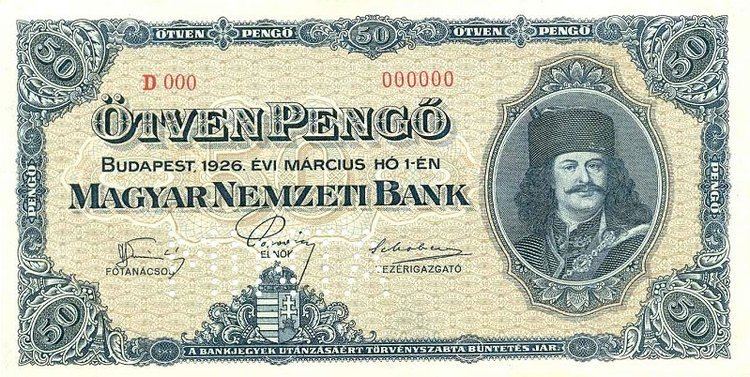 | ||
Hungarian pengő paper money (Hungarian: pengő papírpénz) was part of the physical form of Hungary's historical currency, the Hungarian pengő. Paper money usually meant banknotes, which were issued (either in fact or in name) by the Hungarian National Bank. Later – during and after World War II – other types of paper money appeared, including emergency money, bonds and savings certificates.
In the beginning, paper money was designed abroad, and were printed using simple methods. Later, developed techniques were used creating banknotes which reflected stability. After the war, in parallel with the value loss, the quality of banknotes decreased. Finally, not even serial numbers were printed on the notes.
Soviet Red Army issues
In 1944, during the Soviet occupation of Hungary, the Red Army issued paper money without cover in the areas under its control. These banknotes were of poor quality, and aggravated the inflation of the pengő.
